It’s tough to find high-quality tech products from recognisable brands that are priced affordably. The Enco Air Pro series of TWS buds from OPPO has firmly established itself as a rare breed in this niche category. Since the Enco Air2 Pro were extremely well received by critics and users alike, the expectations from the successor were bound to be high. If you are wondering if the new wireless earphones from OPPO – the Enco Air3 Pro – hold up to the hype or not, we’re here to help you out. I have now used these TWS for more than a week and here I will list down the aspects of these earphones that I found particularly impressive, and the ones that could be improved upon. Without any ado, let’s dive in.
Verdict
OPPO Enco Air3 Pro gets a lot of things right, especially for its price point. Be it the design, the sound quality, the active noise cancellation, or the build quality, these TWS from OPPO offer great value for your buck. If someone actually gave you these earphones to use and asked you to guess the price, you will likely peg it 50-70 percent higher than its retail price of Rs 4,999, which is a great indicator of this product’s intrinsic value. However, it is important to point out that the buds don’t offer wireless charging, the case can scratch easily, and at times, you might feel like the bass performance could have been better. Having said that, OPPO Enco Air3 Pro are extremely easy to recommend due to the overall package.
Design
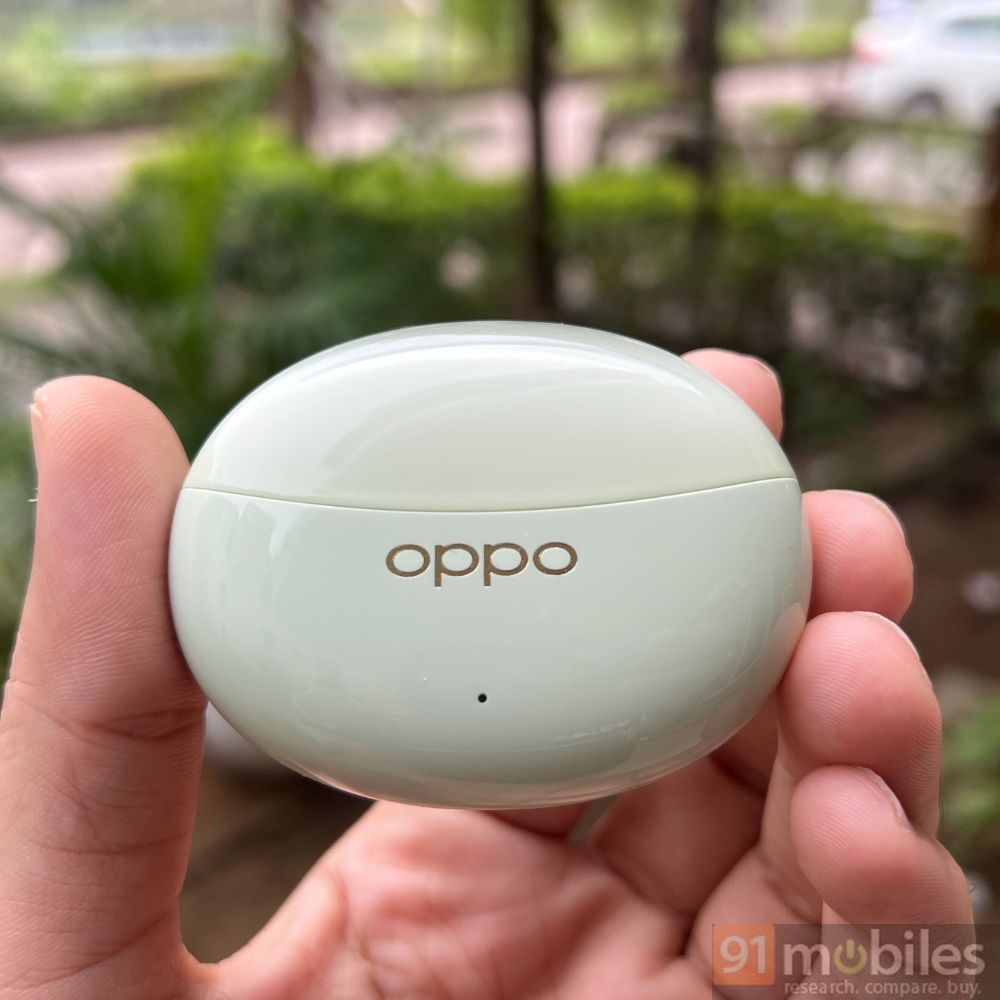
Let’s talk about the case first. OPPO Enco Air3 Pro comes with an eye-grabbing case with a glossy finish. The case itself comes with an aesthetically-pleasing design, similar to its predecessor, as the top lid is coated with a transparent layer that appears to float over it. The textured design on the lid with the transparent coating gives the case a distinct look.
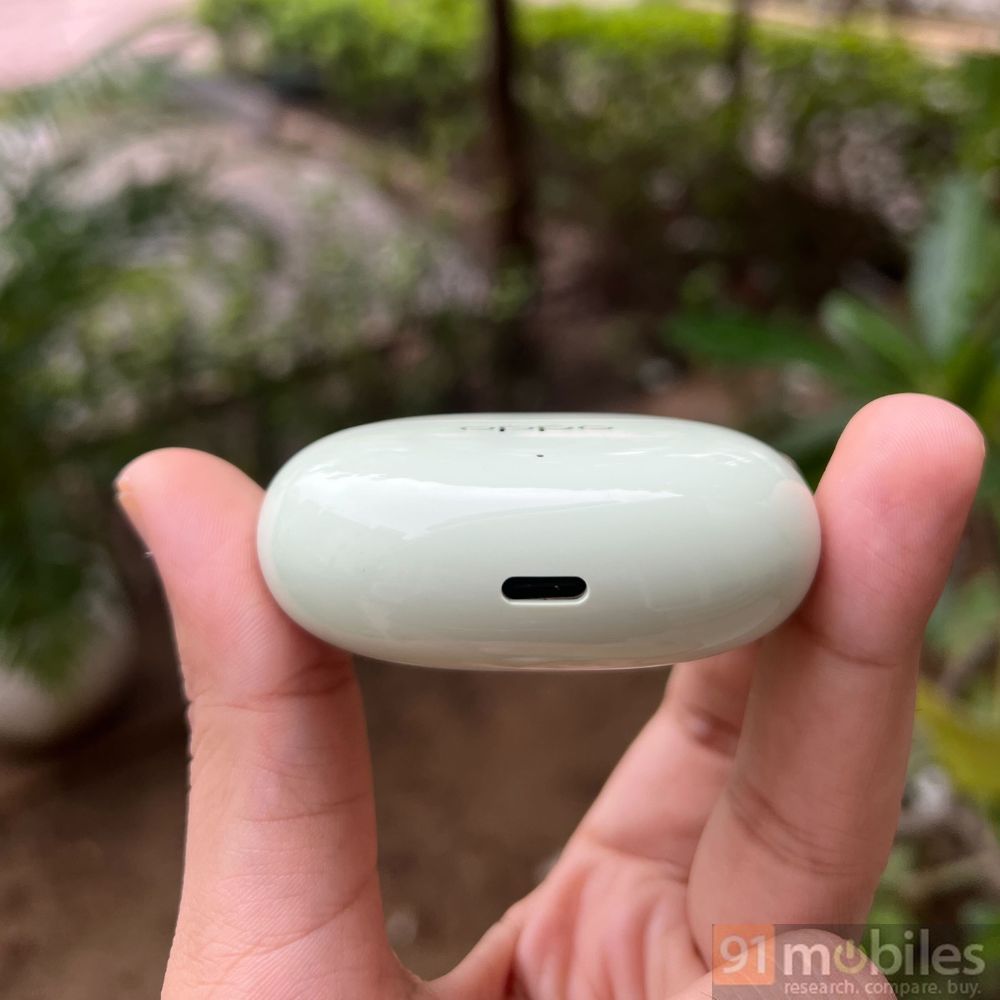
As the case is round and compact, it is easy to hold and can even be slipped into your jeans pocket as well. I found it easy to open and close the lid of the case with just one hand, which things quite convenient. The case comes with a USB Type C port for charging, as usual.
Due to the glossy finish, which does give the case a premium look, it can pick up scratches easily. In my regular usage, the case did get a lot of scratches despite not being handled roughly. However, on the positive side, the scratches are not easily visible unless you look at the case up close.
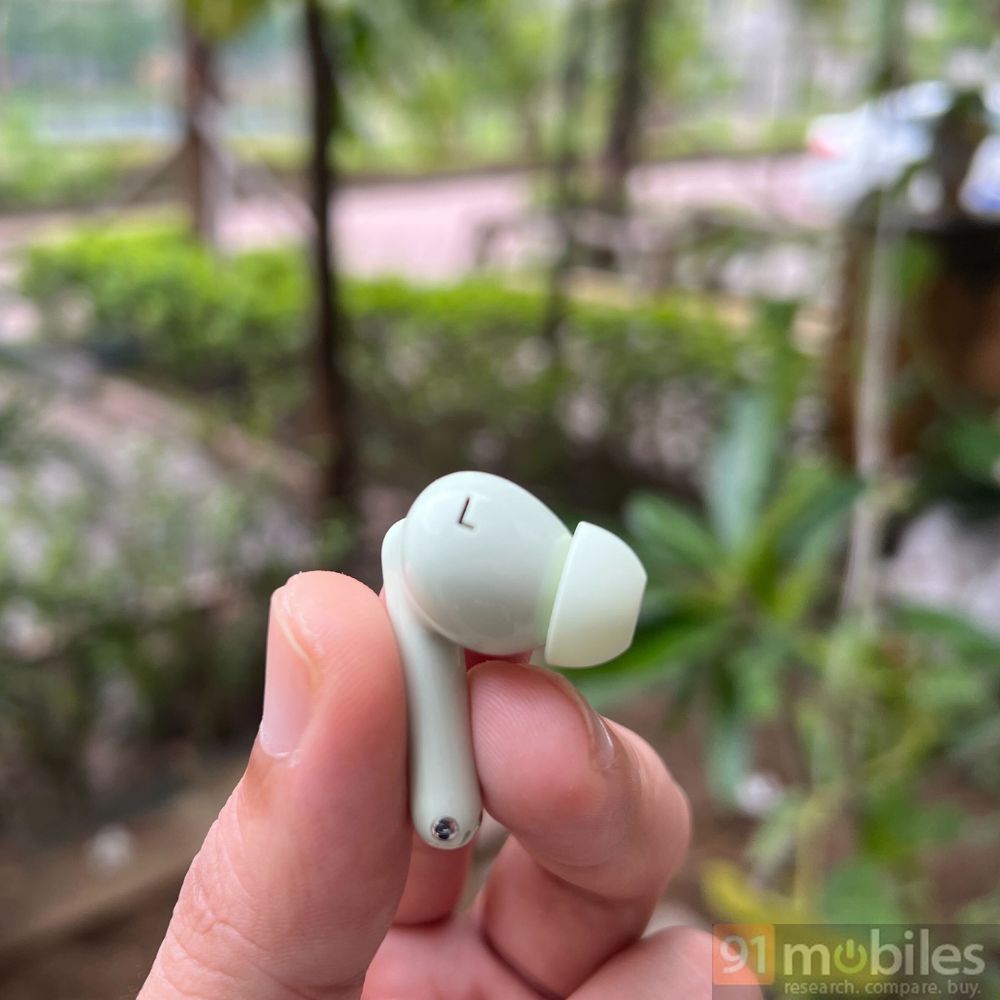
Moving to the earbuds, the brand has clearly followed the mantra – ‘If it ain’t broken, don’t fix it’ – and retained the design from the previous iteration. In my use, I found the fit to be comfortable and even after using the earphones for extended hours, I didn’t feel uncomfortable at any point. As there are different ear tip sizes available in the retail box, you can definitely switch and find the perfect fit for you if you find the standard fit to be uncomfortable.
Sound quality and ANC
The most crucial aspect of any audio product is the sound quality. Before I share how my listening experience was with the Enco Air3 Pro, let me share the USP of these TWS in this department. As per OPPO’s claims, these wireless earphones are the world’s first to offer a bamboo-fibre diaphragm. Now, you might be wondering.. what exactly is the benefit of using bamboo fibre in the construction of this diaphragm? As per the company, over the regular titanium-plated diaphragm, the diaphragm used in the OPPO Enco Air3 Pro has three major benefits:
Lightweight: OPPO says that these diaphragms are 40 percent the weight of titanium-plated diaphragms of the same thickness. The smaller mass allows the diaphragm to be driven more easily, which lets it respond to changes in sound faster.
Stronger rigidity: These diaphragms offer 44 percent of the deformation compared to titanium plating, which is 56 percent more rigid. Notably, bamboo fibre has a higher deformation point of 50kHz, which is far beyond the audible range of the human ear.
Internal damping: With greater internal damping in comparison to titanium plating, these diaphragms offer faster recovery speed.
Technical benefits aside, in real-world usage, I found the audio delivered by these TWS to be authentic and without much distortion. The support for LDAC means that these wireless earphones can support audio transmission up to 990kbps, which is three times that of the traditional SBC encoder (328kbps). All this means that the audio file details are preserved effectively and you get to experience rich sound. While it is clear that the LDAC support ensures that you can experience high-quality audio, the general sound signature of these earphones, when dealing with regular audio files is still pretty good.
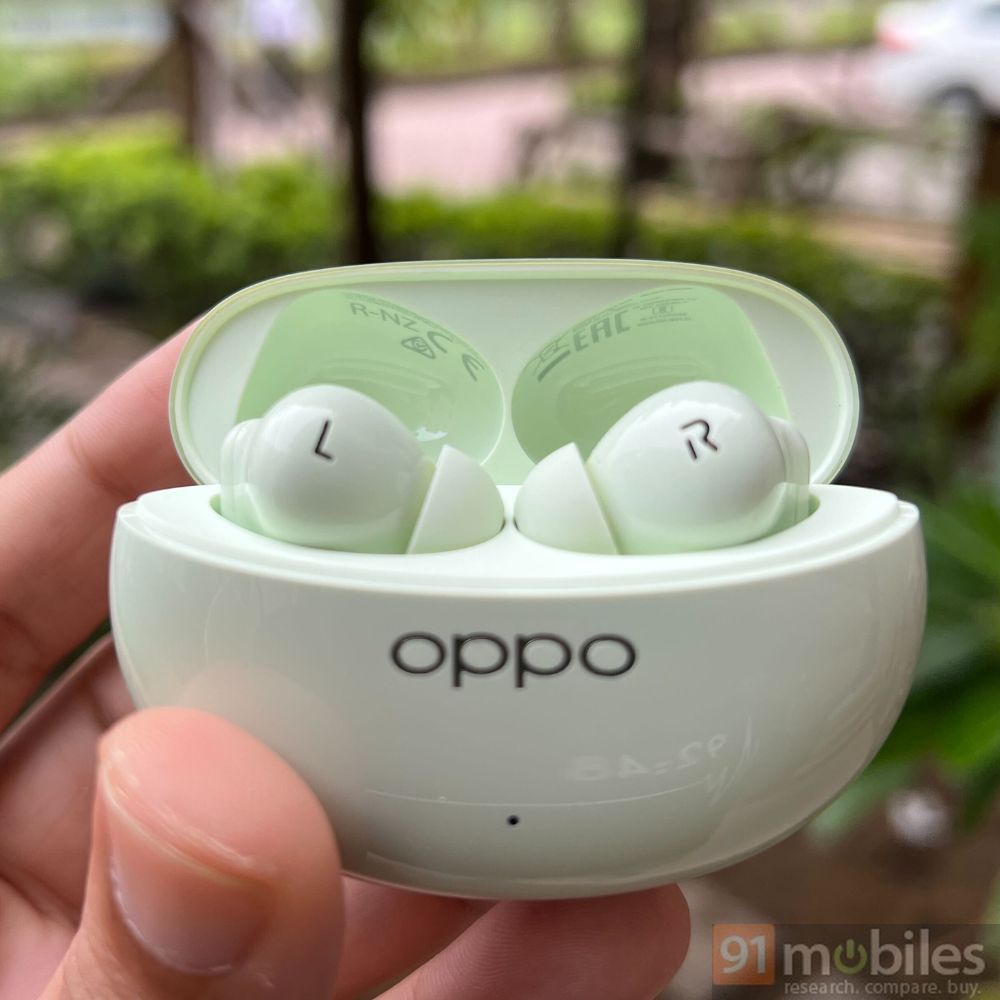
In terms of Active Noise Cancellation, these earphones support 49dB Adaptive ANC, which does tune out ambient noise dynamically in different environments but you will have to keep your expectations in check too. In my usage, I realised that while minor disturbances were effectively reduced, in an office environment, there wasn’t a major blockage when it came to keyboard clicks and loud conversations. Overall, this is a quality-of-life feature that will elevate your listening experience but not change it drastically in a noisy environment.
Two key features that these TWS offer are OPPO Alive Audio and Golden Sound 2.0. The former creates spatial surround-sound effects while the latter creates a user-specific ear canal model to ensure your listening experience is finely tuned. In my experience, the features did work as advertised but again, I won’t go as far as to say they offered a game-changing experience.
Connectivity and controls
The Enco Air3 Pro features support for Bluetooth 5.3 connectivity, which enables low latency. I experienced no connectivity issues and the earbuds connected flawlessly with my devices really quickly as well. Much like its predecessor, the Enco Air3 Pro features the ability to connect with two devices simultaneously. While the dual connectivity feature works flawlessly between OPPO devices, when it comes to switching between a phone and a laptop, it takes around 3-4 seconds. However, in my use, it was never delayed to a point where I would find it to be frustrating.
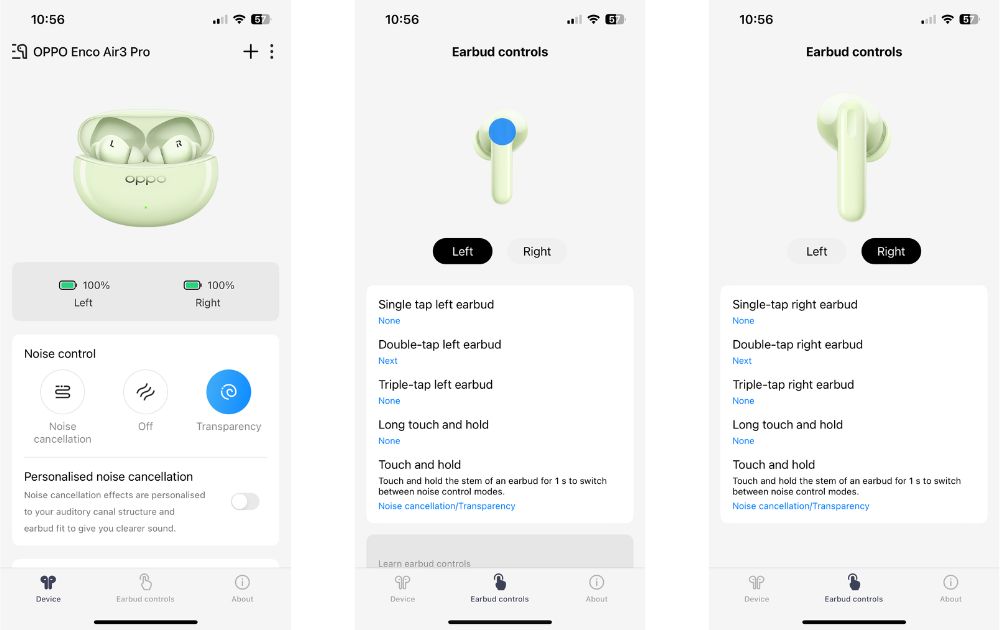
As far as touch controls go, you can get the earbuds in pairing mode by putting both buds in your ear and pressing them simultaneously for around 4 seconds. Noise cancellation/Transparency mode can be enabled by tapping on the right earbud. I found the controls to be fairly consistent and intuitive. HeyMelody app (present on both Android and iOS) allows you to customise controls to a great extent and you can assign these controls to both the left and right earbuds, which was an extremely convenient feature to have. This app also offers personalised noise cancellation, which I found to be effective too.
Should you buy OPPO Enco Air3 Pro?
OPPO Enco Air3 Pro has been priced by the brand at Rs 4,999 and at this cost, I cannot think of another pair of earbuds that look as aesthetically pleasing as these. Apart from design, these wireless earphones come with refinements over its predecessor that improve the user experience in a noticeable way. With Active Noise Cancellation, lightweight design, and customisable controls, these earphones do make a lot of sense for anyone who wants a budget option that ticks all the right boxes.
Editor’s rating: 4 / 5
Reasons to buy
- Good pricing
- Great lightweight design
- Customisable controls
Reasons not to buy
- Battery life could have been better
The post OPPO Enco Air3 Pro review: light on the pocket, heavy on performance first appeared on 91mobiles.com.
0 Comments